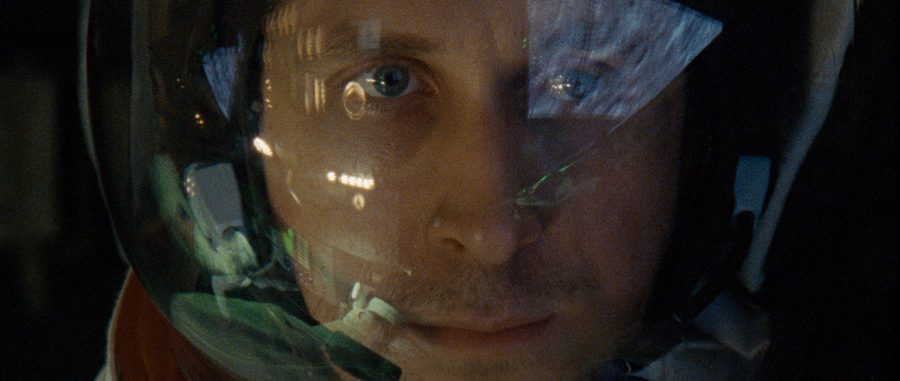First Man leaves science and history fan on the edge of their seats
October 25, 2018
Thrilling historical movie, First Man, was released on Oct. 12. It was the awe-inspiring movie about Neil Armstrong and his journey to the moon, starring Ryan Gosling and Claire Foy. The extravagant explains how Armstrong balanced family and work.
Before the film even came out in theaters, there was tons of controversy surrounding it. Many people were not to happy with the planting of the U.S. flag not being shown. The directors and cast had a reason for this though; it was to show the scientific accomplishment for the entire world not just America. However, the flag is not completely taken out of the movie, it is later seen in several shots of the moon and the landing module.
The film takes place between the years of 1961 and 1969. It starts off with a trail run, then shifting straight to Armstrong’s family life. The audience is able to get a glimpse of what his daily life is like. Quickly the mood becomes darker with the death of his daughter, Karen. He applies for the NASA position during his time of grief, moving his family to Houston for a fresh start. The rest of the movie shows what it was like to be an astronaut or to be in the family of an astronaut.
Running at two hours and twenty-one minutes, the film discusses many serious topic, including: death and grief, protests and hatred, scientific exploration and politics. It shows what Armstrong’s wife Janet’s life was like watching NASA fail and succeed and raising their children not knowing if her husband would be coming home.
Gosling, two-time Academy Award nominee, portrayed Armstrong with stunning emotion and expression. Foy and Gosling have great chemistry and show the many ups and downs of being married to an astronaut.
The moon’s surface looked very realistic; it felt as though it was right in the theater. Every camera angle had a reason, and for the most part is was to show the perspective of the astronauts. Sometimes the viewers were staring at a pitch black screen, but that’s because that’s what Armstrong was seeing in space.
The music and clothes fit the period perfectly and the sets and technology were very believable and realistic, making the audience feel fully immersed in the experience. The music alone could make someone sit on the edge of their seat.
All around it was a great film for everyone from teenagers to the elderly, science nerds to history buffs, to your average Joe.










